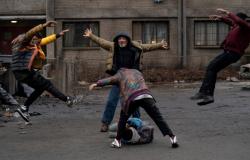On October 30, 1979, Robert Boulin, Raymond Barre’s Minister of Labor, was discovered drowned in 50 centimeters of water. The suicide trail is favored, but hardly convinces. A new witness has just boosted the investigation, 44 years later. Julien Sapori evokes these testimonies “in articulo mortis” (Editor’s note: at the moment of death) which sometimes constitute, for justice, the last chance to resolve a long-term investigation.
At the beginning of November 2024, the press told us that new declarations would make it possible to relaunch the “Boulin affair”. We remember that the lifeless body of the Minister of Labor of the Barre government (Giscard d’Estaing being President of the Republic) – was discovered on October 30, 1979 in a pond located in the forest of Rambouillet (Yvelines), floating in 50 cm of water. At the time, the investigation concluded that it was suicide by drowning, a version immediately cast into doubt, in particular by the family of the statesman, who had mentioned an assassination involving the Civic Action Service (SAC), the “order service” (sic!) of the Gaullist movement. The motive would have been the fear that Boulin would denounce a network of false invoices for the benefit of the RPR. This hypothesis now seems to be confirmed.
“The Boulin affair”, a state scandal
Already in 2015, the Versailles public prosecutor’s office announced that the “Boulin affair” was the subject of an opening of information for “arrest, kidnapping and sequestration followed by death or assassination”. In 2020, a new medical expertise confirmed this approach, concluding that death by drowning was impossible, and noting on the body the presence of fractures on the face, on the nose and on the left cheekbone, ” caused by direct shock and concomitant with death “. The hypothesis of acts of torture preceding the death is also raised. That despite such material clues, the affair could have been qualified as a “suicide”, constitutes a real state scandal and takes us back to a time when, in so-called “sensitive” affairs, the links between political power and justice were particularly strong.
But the real turning point, perhaps decisive, arrives in 2023. It is at this time that a certain Elio Darmon, (who until then did not appear in the file), comes forward to a gendarme. In June 2023, this witness was interviewed by the investigating judge, and explained his long silence by the fear he had had for decades of being, in turn, assassinated. “ If I had testified at the time, I would have been dead (…). If these people had been capable of killing a minister, imagine what they could have done with me “. By now, his age (76) and his health concerns would have convinced him that the time to speak had come, because he now found himself, “ at dusk [sa] vie » and had little left to lose. In recent days, Elio Darmon has given several interviews to the press, confirming the remarks made before the judge. A storyteller? Not sure: if his statements are absolutely resounding, the verifications carried out seem to give them credibility.
At the time, Elio Darmon, aged 31, lived in Ville-d’Avray (Hauts-de-Seine) and was the manager of a real estate company. Near his home, there was a libertine club – which in the past would have been called a “house of tolerance” – King René (permanently closed in 2012), where he met another regular, Pierre Debizet. This business leader, former resistance fighter, was known to be a “shock” Gaullist activist, opposed to decolonization and strongly involved in the SAC (created in 1960) of which he was even the first president – a position he would hold. forced to leave quickly because of his opposition to the Algerian policies of General de Gaulle. In 1981, he was implicated in the famous Auriol massacre: the assassination of six people from the family of Jacques Massié, local leader of the SAC whom other activists of this structure suspected of wanting to “betray”, in making certain sensitive files public. Pierre Debizet will benefit from a dismissal of the charges, but his name will still be mentioned during the assassinations, in Paris, of left-wing activists Henri Curiel (May 4, 1978) and Pierre Goldman (September 20, 1979). He died on May 11, 1996.
A meal at King René
At the beginning of November 1979, just a few days after the media announced the discovery of Robert Boulin’s body, Elio Darmon claimed to have attended a meal at the King Renéin which four other people participated: the man named Pierre Debizet, Jean-Pierre Lenoir (agent of the SDECE – External Documentation and Counter-Espionage Service, ancestor of the current DGSE) and two unknown people. We don’t quite understand what Elio Darmon was doing around the table with these violent “barbouzes”, with more than doubtful morality… In any case, he affirms that the conversation had focused on the death of the minister. Pierre Debizet, clearly upset, is said to have declared to the other guests that “ the ‘boss’ asked you not to kill him. Just to give him a “dance” [c’est-à-dire de le rosser]and recover the files “. To justify himself, one of the strangers replied that it had been an “incident”, because Boulin died in their arms, after the blows received (and presumed “non-fatal”); then he concluded by specifying: “ we then threw it into the pond “. Pierre Debizet’s reaction to this report: “ Now I don’t know what I’m going to say to Pasqua ».
Let us recall that Charles Pasqua (1927-2015), Gaullist activist of the “old guard”, former member of the SAC, “historical” advisor to Jacques Chirac was, at the material time, an influential senator of the RPR. A TV film by Pierre Aknine broadcast in 2013 on France 3, Crime d’Etathad mentioned in very detail the “Boulin affair”, explaining it by settling scores within the RPR sphere, the henchmen of the SAC taking charge, on orders, of the elimination of this minister who threatened to make very compromising revelations to Justice.
Is Elio Darmon a confabulator like we often come across in high-profile cases? Perhaps not, because he specifies having noted, at the end of the meal at King Renéthe license plate number of the Mercedes which had transported the two strangers there, and having kept it in a biscuit tin before communicating it to the judge. According to Médiapartthe owner of the vehicle would have been identified: it would be a certain Henri Geliot, cafe owner, who died in 1986, implicated in several cases of violence with firearms. The perfect profile of the henchman in charge of the dirty work by the SAC.
The truth “ in the article of death »
Elio Darmon’s account (once again, provided that it is confirmed by the current investigation) therefore confirms in all respects the hypotheses of those who, for 45 years, have affirmed that Robert Boulin was the victim of a murder (with or without premeditation), motivated for political reasons.
Historically, the revelations made “ in the article of death » constituted for Justice the last chance to try to elucidate an old criminal case which had not prospered: this is how a certain Henri Buronfosse, hoax entrepreneur, anti-Semitic and nationalist activist, confessed in 1928 (26 years after the events) having intentionally blocked the chimney of Émile Zola’s apartment, causing his death by asphyxiation. When all hope is lost, we can always console ourselves by saying that, perhaps, the truth (judicial or historical) will be known thanks to witnesses or defendants arriving at the twilight of their lives and deciding to ease their conscience. : after the “Boulin affair”, I am thinking of the “Grégory affair” and the Belgian affair of the “mad killers of Brabant” (the latter now prescribed – cf. the articles by Michel Leurquin in actu-juridique.com from March 19, 2024 and August 21, 2024).
100 years ago, another political murder: the Matteotti affair
Beyond legal news, it is impossible for me to mention the “Boulin affair” without thinking of another assassination with political motives, perpetrated exactly 100 years ago: that of Giacomo Matteotti, a socialist deputy killed by Fascist thugs on June 10, 1924, in Rome. His body was found on August 16, 1924, and the responsibility of the perpetrators (members of a sort of “parallel police” of the fascist party furiously reminiscent of the SAC), who had received the order to “thrash” him because of his explosive accusations against the Duce and his party, formally established by a justice system which was not yet in the hands of the fascists. The “correction”, initially planned, had gone awry, and ultimately the deputy had been killed.
Far from being destabilized by this murder, Mussolini took responsibility for it and, in a threatening speech given on January 3, 1925 in the Chamber of Deputies, he dared to say: “ I declare here, in the presence of this Assembly (…) that I alone assume political, moral and historical responsibility for what happened. (…) If fascism was an association of criminals, I am the leader of this association of criminals “. In the process, he adopted the so-called “fascist” laws which would transform the liberal Italian state into a dictatorship. Sometimes, assassinations (and also assassination attempts – as recent news reminds us…) can mark major political turning points. This was not the case with the Boulin affair, a real “firefight” which could have inflamed the institutions of the Fifth Republic and which, from now on, is only of historical interest. “ Let the dead bury the dead », Said Giscard d’Estaing the day after the death of his minister.






